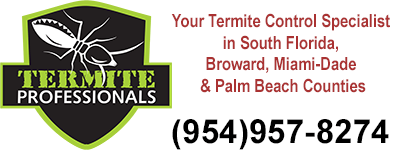Termite Control - How to Reduce Your Home's Risk of Termite Infestation
Termites are the most economically important wood-destroying organism in the United States, with approximately $2 billion per year being spent for their prevention and treatment. This high-dollar amount could be reduced if homeowners implemented a number of relatively simple, inexpensive, practical measures around their home and outlying structures that reduce the risk of subterranean termite infestations. Such preventive measures are very cost effective given that a home typically represents one's largest monetary investment.
Many construction and landscaping features literally can invite termites into one's home. An awareness of basic termite biology and habits can help you understand the necessity of certain prevention measures. The goal is to recognize and alter conditions around one's home so as to reduce the termites' environmental requirements for moisture, food (wood), and shelter.
 Solutions to Termite-Conducive Situations
Solutions to Termite-Conducive Situations
Problem:
Cellulose (wood, dead plant material, paper, etc.) in contact with soil provides termites with ready and unobservable access to food.
Solutions:
- Keep all wooden parts of the house foundation at least 6 inches above the soil.
- Keep mulch levels several inches below the siding and wooden parts of the structure.
- Avoid or minimize use of wood mulch next to the foundation.
- Remove dead trees, stumps, and roots near the structure.
- Never store firewood, lumber, or paper against the foundation or in the crawl space.
- Remove wood debris and form boards.
Problem:
Moisture accumulation near the foundation provides water needed for termite survival.
Solutions:
- Grade or slope soil away from the foundation.
- Divert rain water away from the foundation.
- Maintain clean gutters and down-spouts.
- Install down-spout extenders and splash blocks.
- Use drain tiles if site is flat.
- Divert lawn sprinklers and irrigation water away from the foundation.
- Promptly repair leaking faucets, water pipes, and air conditioning units.
- Use mulch sparingly (no more than 2 inches depth is recommended).
- Keep plants and ground covers 3-4 feet away from the house foundation.
Problem:
Poor ventilation in crawl space provides water needed for termite survival.
Solutions:
- Cover approximately 75 percent of the soil surface in the crawl space with a vapor barrier.
- Install 1 square foot of vent opening per 300 to 500 square feet of crawl space area (when using a vapor barrier).
- Install 1 square foot of vent opening per 150 square feet of crawl space area .
- Enhance cross ventilation.
- Remove any vegetation covering vents.
Problem:
Hidden termite access.
Solutions:
- Install trellises and trim plants so that they do not contact the house.
- Do not build flower planters against the house.
- Regularly inspect cracks or joints in concrete slabs for evidence of termites.
- Install metal flashing when attaching porches or decks to an existing house.
- Remove mulch that contacts siding or obscures a clear view of the foundation.
- Never install foam board insulation (polystyrene) below grade.
Annual Inspection Checklist
- Water is directed away from the foundation.
- Wood and other cellulose materials (including mulch) are away from the foundation.
- The foundation is exposed around the entire house.
- The basement (or crawl space) is relatively dry.
